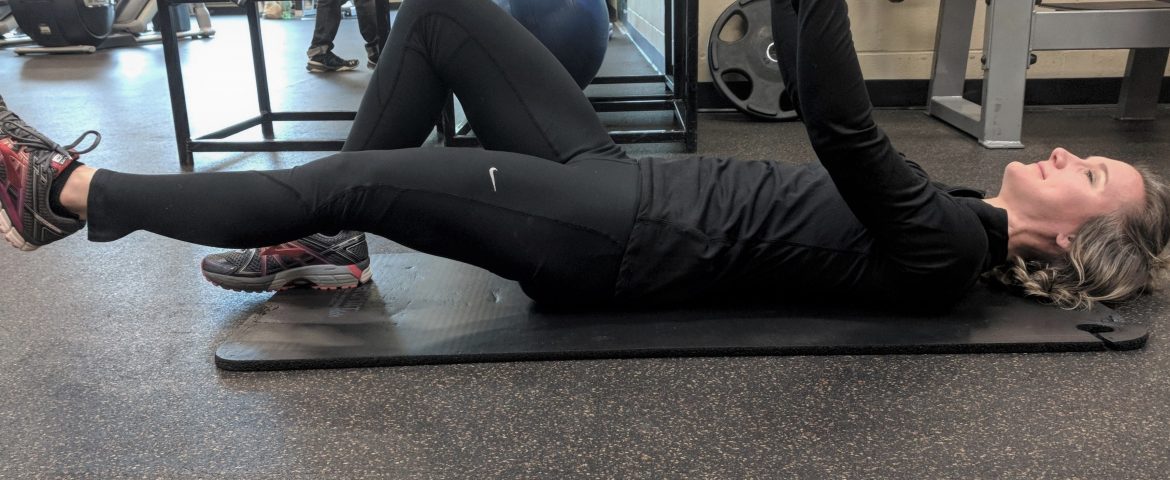In the first article we talked about the first step to increasing balance which is stabilizing the spine, mainly the area between the hips and the ribs. Balance is not a static position, it is a dynamic ability to maintain posture or body position in which distributed forces are in equilibrium through an even distribution of weight and muscle tension, allowing the individual to remain in a steady and correct body position. This is extremely important in not only avoiding injury, but also applying the necessary forces to fine tune movements and generate power. Once the spine is stabilized the next step is to work on limb stabilization. When first working on stabilizing the lower body (will talk about shoulder stability in another post) it is best use something stable to hold onto, so you can allow the body to find the proper muscles to use to maintain proper balance. Once you can maintain balance on one leg the next step is to be able to balance while moving.
First you need to work in building stability in a forward and backward motion (sagittal plane for the fitness nerds like me). Starting here will increase the ability to maintain proper spinal alignment while swinging your club, this will also allow the shoulders and upper back to do the rotation and keep the stress off the low back and prevent a weight shift back on to your heels. After stabilizing in the sagittal plane, the next step is to stabilize side to side (frontal plane). Working stability side to side will reduce the sway in your swing and allow for a more efficient swing that will allow you to get your hips through and help maximize power. The last step is to work stability while doing rotational movements (transverse plane). This is where you will be hold a strong posture while turning through your backswing all the way through your follow through.
The single leg (SL) deadlift is one of the best exercises for developing sagittal plane stability, while also strengthening hip extension that is used to generate power in your golf swing.
To perform the SL deadlift start standing on the left leg and raise the right leg backwards. Keep a slight bend in the left leg, press the right heel towards the wall behind you. The hip should move backwards behind the left foot. The hips and shoulders should remain parallel to the floor. When returning to the starting position the focus should be on the use of the left glute to bring the hips back forward to the starting position.
When building frontal plane stability one of my favorite exercises is the lateral lunge to stability. This exercise trains one leg to take on load and be able to explode while the other side decelerates and then stabilizes the body. Like the swing where one side gets loaded during the backswing and then during the down swing the hips explode through while the front leg and hip decelerate and stabilize the body on the follow through.
To perform the lateral lunge to stability start sanding on the left leg with the right knee raised towards the chest. Step out to the side keeping the leg straight and landing on the right side. When you land your weight should be primarily in the heel of the right foot and the hip sitting back like you are sitting into a chair, the knee should be tracking the toes (staying in line with the big toe and the second toe). Push off the right leg back up to the starting position, making sure the left leg stays straight the entire time.
Training transverse plane stability is important to maintain stability through the entire swing. The hip airplane is great for building stability along with working internal and external rotation. Maintaining stability through the entire swing while the hips and shoulders are moving at different speeds and time in the swing is key to being able to hit an accurate shot.
The hip airplane you are going to start in the same position as the SL deadlift. Like the SL deadlift you will extend the right leg behind you and stop in the bottom position. From here you will rotate your hips and shoulders (keeping them moving together and staying in line with each other) until they are perpendicular to the floor. Then you will rotate back down until parallel to the floor. Especially at the beginning using a golf club or bench to hold on to will help maintain balance.
Adding these into your program
When adding these exercises into your program you can work them in as part of the warm up before you begin your strength work. By adding them into the warm up they will help stabilize your body for the strength work you will be performing.
Begin with the workout form part 1 then work into:
SL deadlift 2×10 each leg
Lateral lunge to stability 2×10 each leg
Hip airplane 2×10 each leg
